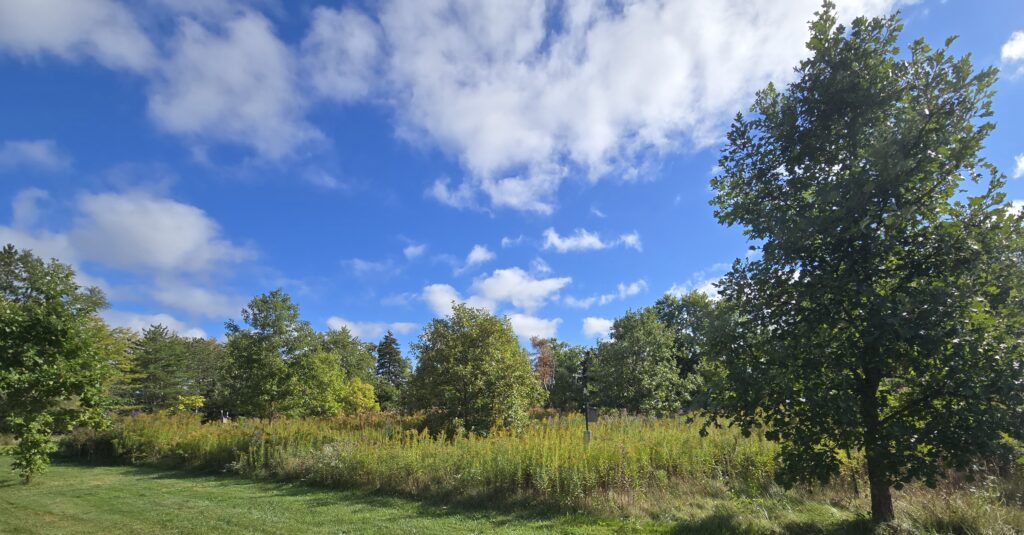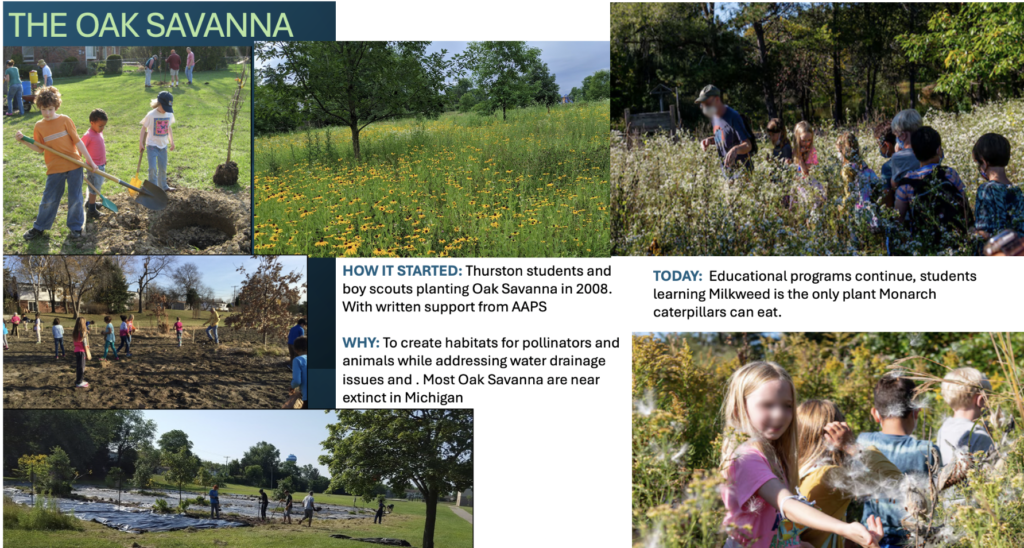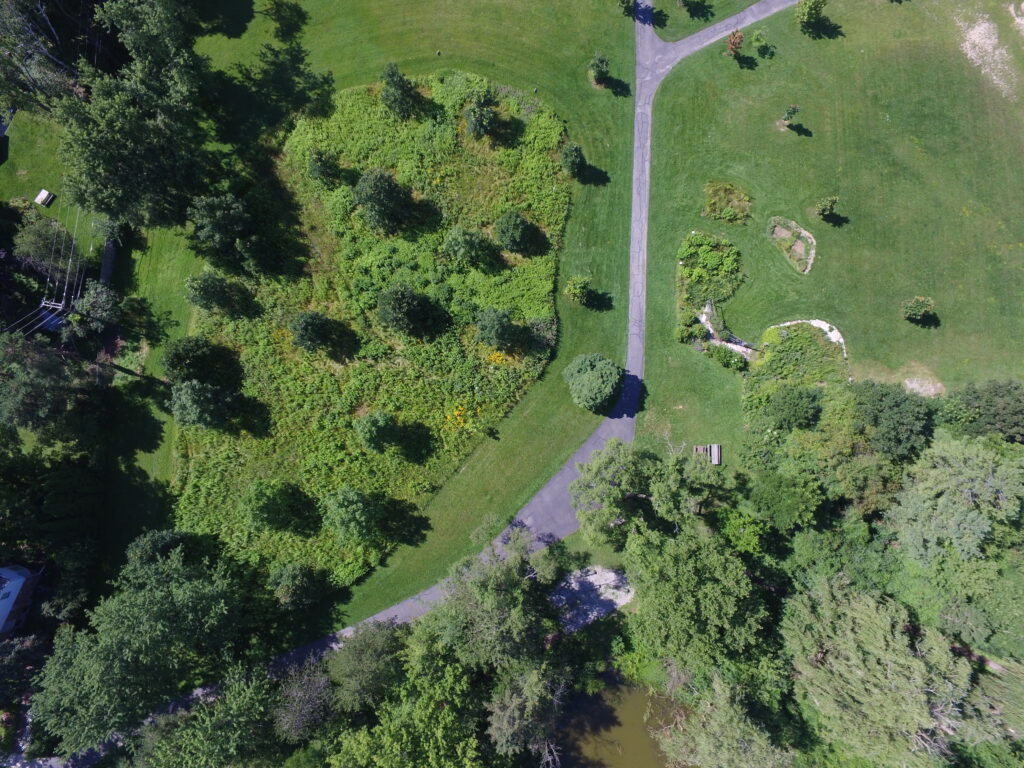Link to Google Map of all labeled trees : 100’s of native Michigan trees planted by students over 5 decades. Nearly every tree native to Michigan thrives here in this space.
Click to read about the Thurston Nature Center Oak Savanna
Oak Savanna
Developed starting in 2008 with donations and grants (including from MI DNR) to address flood prone areas. The work was done in 2009 to a large extent by scouts and Thurston students, under the direction of TNC stewards. The area was declared mature and functional as a wildlife habitat years later, after extensive management to add new native species and control invasive species. The Savanna has high diversity, benefitting many species of animals. Oak Savannas are now rare in Michigan and this is one of the few in the state. The space is used for environmental education. Expansion onto property for Oak Savanna approved by AAPS thus expanding TNC footprint.
This precious Oak Savanna habitat is 0.7 acres at the south side of the Thurston Nature Center and the northeast side of the Thurston Elementary School playground. Twenty oaks were planted in 2009, with Thurston Elementary students helping. Since then there have been two Eagle Scout projects, and help from Thurston students, to convert the unmowed, non-native turf grass to a diverse planting of native ground-level grasses and flowers. These activities occurred in 2015-2017. Subsequent work included mowing and burning to reduce weeds while the native plants took hold. By 2023, the Savanna was a fully functioning native-plant habitat, attracting butterflies, moths, bees, grasshoppers, many bird species and even garter snakes.



Learn more about the Oak Savanna and its history in these founding documents:
- Oak Savanna Project Narrative, 2009
- Oak Savanna Planning document, 2009
- Oak Savanna trees, sources, prices, and related information,
compiled by Neal Foster, 8/12/08 - Project Report on Short-Grass Prairie Creation in Oak Savanna, Phase 1, Nov 2015
- Project Report on Short-Grass Prairie Creation in Oak Savanna, Phase 2, Dec. 2016
- Map of Oak Savanna 2024
- Approvals & Letters of Support to expand
Background on Oak Savannas: Between 4000 and 6000 years ago, long before Europeans settled here, oak savannas (also called oak openings) were quite common around what is now Ann Arbor. Native Americans regularly burned savannas (and other habitats) to improve conditions for game birds and mammals. When the earliest land surveyors first explored our area in the early 1800s, they noted seeing many of these oak savannas. Like prairies, oak savannas are a fire-dependent habitat type in an area with limited rainfall, but the rolling grassland of the savanna is scattered with isolated trees. The trees are primarily large, old oaks, and there is between 10 and 60% canopy, with or without a shrubby layer below. The predominantly grass-covered ground layer is composed of species associated with both prairie and forest communities. Sadly, oak savannas were virtually eliminated in Michigan long ago, as they were some of the easiest areas to convert to agriculture. The Thurston community is proud of having replanted and lovingly cared for this Oak Savanna.
Map of Oak Savanna 2024 – records their size in 2024, 15 years after the 20 trees were planted, showing that 14 of the 20 are now over 6″ in diameter. All 20 trees planted in 2009 have survived, helping the area grow into an excellent demonstration of the oak savanna plant community.
The Thurston Nature Center oak savanna includes five each of these four species of native Michigan oaks
- Bur Oak
- Chinkapin Oak
- Swamp White Oak
- White Oak
Here is a drone photo of oak savanna in July, 2024 showing a healthy habitat area for this rare habitat type:

Additional photos from the planting of the Oak Savanna in 2009:



Here is the same location as the photo above, but in 2024, showing all the growth in the intervening 15 years:

Some additional photos of the oak savanna trees, showing examples of verifying the size (circumference and diameter) in September of 2024:




